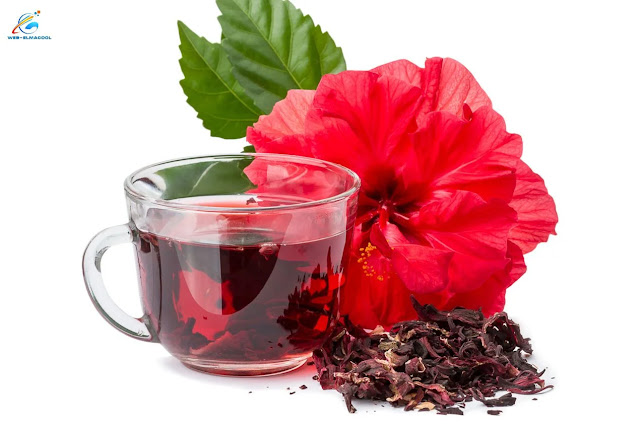The amazing therapeutic benefits of hibiscus
Hibiscus is best known as a refreshing drink that is frequently used in Ramadan and is characterized by its refreshing taste and unique flavor, yet many are unaware of its therapeutic benefits that have been used since time immemorial and proven by modern medicine.
What is hibiscus and what are its benefits and its internal and external therapeutic uses?
What is hibiscus Indian sorell:
Hibiscus is a herbal plant around which is characterized by its small branching and vertical growth where it reaches about 2 metres in height stem and branches of the plant with a green color impregnated with red, the leaves are simple with long necks and serrated edges and resemble the leaves in their form palm rest Red green, the plant carries beautiful-looking meaty flowers of lilac colour and emerges from the arcade armpits with a very short neck and thick and lubricated flower parts of dark red. fruits in the form of capsules with a number of brown seeds spherical color and curly surface, the used part of the floral hibiscus and leaves.
Name:
Hibiscus are known by many names, such as gypsies, gypsies, cockroaches, skeptics and red acid,
Hibiscus is known scientifically as the hibsicus subdarifia of marshmallow.
Therapeutic uses of old hibiscus:
- The pharaohs had long known to grow hibiscus and used their flowers in some therapeutic recipes, especially as a painkiller and worm repellent;
- Since the end of the nineteenth century, hibiscus has been a major source of natural fibre production for the manufacture of ropes, paper and pure cellulose;
- This plant is now one of the most important economic plants in the food and pharmaceutical industries. Its cold or hot water extract of floral cups is used as a very refreshing drink, especially after sweetening it with sugar. After concentrating it, this extract is a colourful substance and gains the distinctive taste for its entry into the food and confectionery industry;
- Eating water extract for hibiscus blossom cups is also medically beneficial for folk treatment, lowering blood pressure, strengthening the heart and calming nerves, as well as treating atherosclerosis and stomach and bowel disease where it activates its movement and secretion of digestive juice.
Therapeutic uses of hibiscus in modern medicine:
- Hibiscus in modern medicine, from research on hibiscus flowers at the Faculty of Science at Cairo University, showed that the compendium of these flowers:
- Have active effects in the eradication of TB microbe;
- It has the potential to kill microbes, especially for many bacterial strains, notably Basils, Washerchia, Coli and others, as well as some parasites;
- Research on hibiscus flowers and leaves has found that they calm uterine, stomach and intestinal contractions and remove their pain, and are also useful against diets;
- The hibiscus boiling syrup is one of the best used in the holy month of Ramadan. It is a soft, gripping, anti-heat, anti-tapeworm, cylindrical and mild stomach laxative that helps lower high blood pressure.
- Some pharmacists of Cairo Pharmaceutical Company have been able to extract antihypertensive and antimicrobial drugs from hibiscus leaves and flowers.
- It is a moisturizer, tonic, digestible, cleansing, soothing and useful for chest aches, asthma, weakened stomach, arthritis, rheumatism, gout, kidney sucking and against alkaline drinks.
- Hibiscus are usually used on several forms and eaten raw salads and added to soup and can cook alone with butter, oil or eggs,
Internal uses of hibiscus:
Hibiscus is used to treat cough, high heat, pulmonary tuberculosis, high blood pressure and to annihilate cylindrical tapeworms, where the filling of an eating spoon is taken and added to the filling of a boiling glass of water and covers for ten minutes and then drinks at a rate of three times a day.
External uses of hibiscus:
The exterior uses of hibiscus are used to further stabilize hair color and make it glamorous copper color. The hibiscus blossom boil is used and added to the henna powder and dough-shaped chamomile blossoms distributed evenly on the hair tresses. The head is wrapped in a 6-hour nylon bag. The hair is then washed with warm water.
Conclusion:
We hope you have enjoyed learning about the many benefits of hibiscus and its therapeutic uses. If you have any questions, please do not hesitate to contact us and let us know! We would also like to hear your thoughts on other medicinal herbs and their potential uses. Thanks for reading!



Comments
Post a Comment